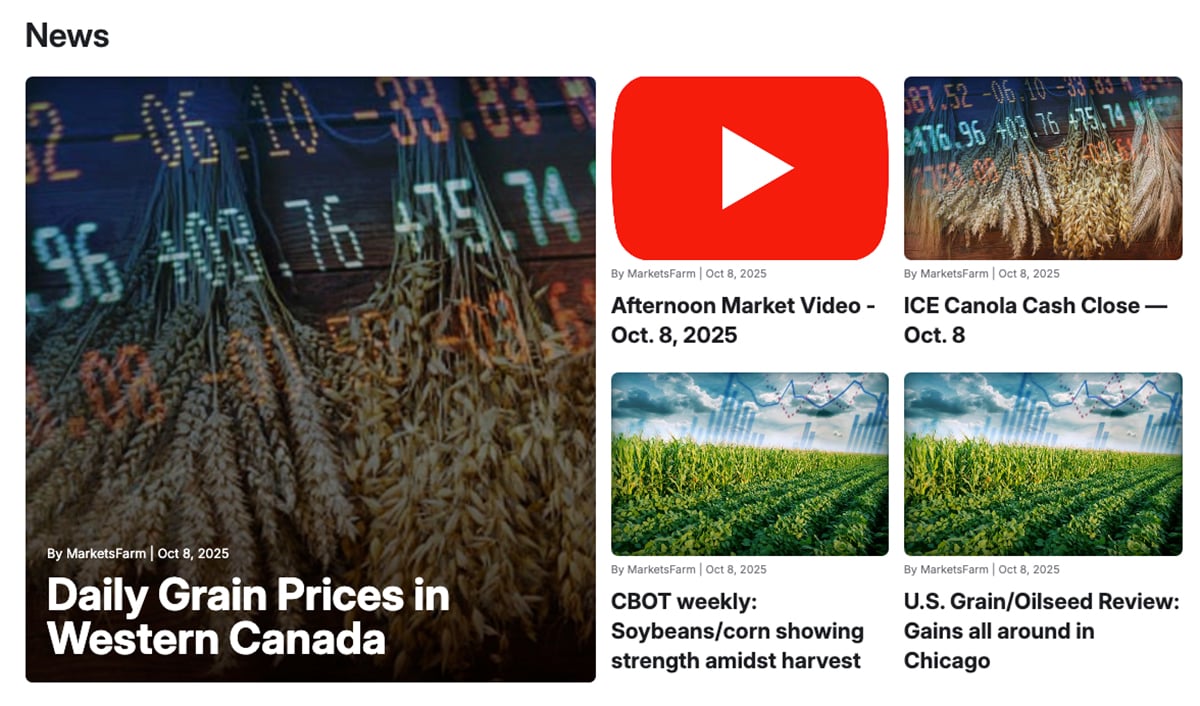NASHVILLE, Tenn. – Rising corn prices, surplus beef and a tenuous hold on export markets means American beef producers must prepare for lower cattle prices in 2007.
“We need to keep in mind just how good it has been over the last several years,” said Randy Blach, executive vice-president of the market analysis firm Cattlefax.
“We have had one of the best runs in profitability that we have ever experienced in this industry.”
During the annual Cattlefax market assessment presented to the National Cattlemen’s Beef Association convention on Feb. 1, producers learned about soaring beef supplies and were warned about falling cattle prices as well as big feed grain bills.
Read Also

VIDEO: Catch up with the Western Producer Markets Desk
The Western Producer Markets Desk provides daily updates on agricultural markets, with recent video commentary including looks into canola, wheat, cattle and feed grains.
The U.S. national herd increased to 97.6 million head, which also increased beef stocks. As well, cow and bull slaughter was up in 2006 due to a prolonged drought, adding another 400 million pounds to the national inventory.
In 2005, the U.S. produced 24.7 billion pounds of beef and 2006 produced 26.1 billion lb.
About 8.7 million head of cattle were removed from the herd between 1996 and 2003. As the expansion phase returned, 2.7 million head were added to the national herd in the last three years, said analyst Kevin Good.
In addition, the U.S. imported more live animals. About 1.5 million feeder calves were bought from Mexico and Canada last year. About 1.3 million were from Mexico while Canada exported slightly less than 300,000. Fed cattle ready for slaughter from Canada in pre-BSE days averaged 725,000, but last year only 705,000 head were shipped south.
Besides more cattle, carcass weights increase each year because cows wean bigger calves. In 2006, the average was 774 lb.
“Each and every year we produce one percent more beef in the United States with the same amount of cows just because of increased carcass weights,” Good said.
Weights may moderate this year because of elevated grain prices. It may be more economical to ship cattle sooner at lighter weights.
Nevertheless, there is plenty of meat for consumers to choose from.
Total supplies of pork, poultry and beef are at record high levels. Pork was a near-record 21 billion lb., up two percent from 2005, while poultry was at 41.8 billion lb. with only slight growth. Turkey production continued to advance and fish and shellfish are becoming a bigger part of Americans’ protein diet.
In 1998-2003 beef demand rose and prices improved.
But retail prices softened in the last 18 months and commodity beef demand fell about one percent.
However specialty programs offering higher priced, guaranteed quality such as Certified Angus Beef, and Prime grade sales improved by one percent.
“When we are talking about demand we have to recognize there are portions of beef demand that are actually stronger and portions that are softer,” Good said.
Retail prices for pork were down two percent and retail chicken breasts fell six to nine percent last year.
Another change occurred with the record price differences between the higher Choice and lower quality Select grades.
On average the spread between Choice and Select averages $9 US per hundredweight, but last year it was $14. Cattlefax expects that to continue with the spread increasing as wide as $25 at some points during the year because of seasonal price differences when demand for various cuts shifts.
Average prices for live cattle are expected to drop in 2007.
In the U.S. the fed market will average $85 US per cwt, down $1 from 2006. Prices could range from $70 to $90 per cwt. throughout the year, translating into potential losses of between $25 and $50 per head in feedlots. At some periods during the year losses could reach $150 per animal.
Feeder calves should average $97 to $98 per cwt. with a price range between $90 and $105.
The 550 lb. calf average price should be about $110 per cwt. with lows of $100 and highs of $120.
Bred cow prices are likely to decline and slaughter cows will be worth less.
Some of that hardship could be alleviated with improved exports.
Struggles continue with Asian markets, but record levels of beef were shipped to Egypt, Caribbean and Central American countries. For example, Egypt bought 80,000 tonnes of liver in 2006. This is three times the 2003 purchase.















